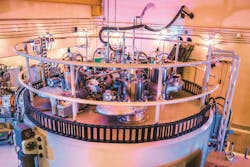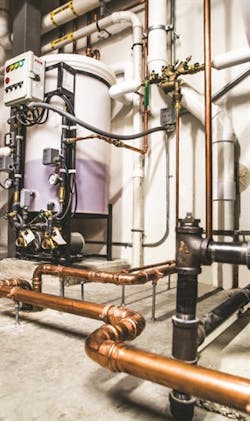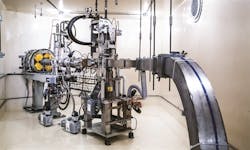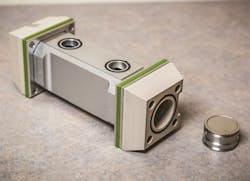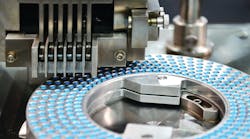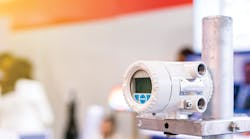When scans or X-rays are needed to diagnose ailments, patients do not often spend much time thinking about how medical equipment works. They simply trust that it does and that it provides doctors the information needed to treat them. But manufacturing medical scanning equipment is complex, and producing the medical isotopes used in scanning can be even more so.
For cardiac positron emission tomography (PET) scans, doctors inject an imaging agent (tracer) into the bloodstream. During the PET scan, the tracer is used to evaluate heart health by measuring the blood flow transported through the coronary arteries to the heart muscle. Doctors use PET scans to safely and accurately identify the presence or absence of coronary artery disease.
The scanning machine is a complicated piece of technology, but it cannot function as designed without the tracer. Rubidium 82 is the active pharmaceutical ingredient in one of the imaging agents used for PET scans. This isotope, which is essential to the functionality of a PET scan, is costly and difficult to produce.
One production process for manufacturing tracers is through the use of a cyclotron, a particle accelerator that produces a beam intended to irradiate different targets, in this case Rubidium metal. This process converts it into Strontium 82, a radioactive isotope. Strontium 82, which decays into Rubidium 82, has no commercial supplier and has only been produced at U.S. government and foreign-based national laboratories until now.
Copper piping was used on the HVAC lines as well.
Zevacor Molecular, a health care firm that manufactures PET and single-photon emission computed tomography radiopharmaceutical products, installed the first and largest commercial, 70-million-electron-volt (MeV) cyclotron dedicated to producing medical isotopes for the global market. Based in Noblesville, Indiana, Zevacor’s primary focus is to manufacture Strontium 82 and Germanium 68, although it is capable of producing many other radioisotopes (atoms with excess energy) for research and clinical applications.
“Each of these drug products [has] a certain affinity within the body and will preferentially go to the targeted disease,” said Todd Hockemeyer, vice president of quality and regulatory affairs at Zevacor. “It’s kind of like a car and driver. The driver is the radioactive isotope connected to a chemical, the car, which will go to a certain place in the body. Often a PET scan is combined with a [computerized tomography (CT)] scan to match it up with your anatomical body to see which organs the radioactivity, and therefore the disease, might be located in.”
The 70, 140-ton cyclotron was manufactured by Ion Beam Applications in Belgium. The magnets and the other components of the cyclotron were delivered in separate shipping containers from Belgium to Indiana by sea transport and then special semitractor trailers. Because of the weight of the components, only specific roads could be used for the delivery.
The cyclotron
The cyclotron is housed in an 11,000-cubic-yard concrete vault with 300 tons of reinforcing steel rod. It required more than 1,300 trucks of concrete to complete the project. On one Saturday, more than 300 trucks created the foundation with one continuous pour since this “raft” cannot shift and have a deflection of more than 1 mm without degrading the energy beam.
“Our aim is two-fold,” said John Zehner, executive vice president and chief operating officer for Zevacor. “First, we are working to stabilize the domestic supply of medical isotopes, including Strontium 82, needed to diagnose and treat critical illnesses. Second, we are taking the lead in securing the future of nuclear medicine and molecular imaging through the growth and development of new diagnostics and therapeutics. Our goal is to improve the diagnosis and treatment of cancer, cardiovascular disease and other critical illnesses.”
Manufacturing Strontium 82 requires a lot of energy. Most of the equipment involved in the process is powered pneumatically with compressed air, but Zevacor estimates its annual power bill at $1 million, with three-fourths of that energy spent cooling water to keep the cyclotron and targets from overheating.
“The heat from highly purified water used to cool the targets and critical cyclotron components is transferred to another isolated chill system filled with purified water,” Hockemeyer said, “which is then cooled by a chill water system using water from the local utility.”
A view inside the vault where chilled water cools the target
The cyclotron is housed with six other vaulted areas, each supplied with two separate sets of copper pipes — one for feed water to make the purified water supply and the other to extract the heat. Because purified water is extremely corrosive to copper, the copper pipe does not come in contact with that water. It only goes to the filtration system that purifies the water after which it is transferred to the target through a PVC line.
“The integrity of that chilled water system is critical,” Hockemeyer said. “If the cooling system shuts down, so does our cyclotron.”
That’s why Zevacor chose a copper press joining solution over soldering.
“We understood how important it was to have highly purified water and a water containment system that’s reliable and doesn’t leak and doesn’t fail,” Hockemeyer said. “The cost of a failure is far in excess of any money we might shave off the installation process because we used welded fittings.”
Zevacor also chose copper to reduce the danger of contamination and particles in the piping, which can become radioactive and create different problems with hazardous wastewater.
“These particles can also cause the systems to degrade and break down,” Hockemeyer said. “Given the investment we have in all the targets and especially the cyclotron, we don’t want that to happen.”
Andrew Smith, project manager at Leach and Russell Mechanical, took the lead on the installation of the copper press joining system. It was utilized for the compressed air lines that ran the pneumatic equipment connected to the cyclotron as well as the water lines that went to the purified water source used to cool the targets.
According to Smith, the installation went well. The sensitivity of the project and the time required for all the pieces to come together made it difficult for him to outline an installation plan in advance.
“The installation overall was smooth,” Smith said. “It was the timing of getting the information and trying to orchestrate that with construction going on that wasn’t typical. Trying to integrate our processes together was a lot different than the normal job. It’s difficult to anticipate piping going through concrete and sleeving if you don’t know what the systems are going to be.”
Smith knew they needed a solution that could be installed quickly. He said the compressed air lines inside the vault were installed incredibly fast.
“The speed at which that went in was pretty impressive,” Smith said. “We cut that in half, time-wise. And that was a perfect scenario for it, because we’re up on lifts, and we’re dodging a lot of other people.”
The target is housed in this piece, nicknamed "the rabbit."
Operational certainty
When time and money are on the line, it is important for owners and customers to know they have worry-free piping systems.
Copper piping was also used on the HVAC lines, but because they couldn’t put them in all at once, it was more difficult to estimate the time savings. But Smith maintains that it is not always about the time savings, but also about the quality of the product.
“The guys that we have doing the work, they take pride in it,” Smith said. “We had at least 3,000 feet of pipe between hydronic and water side with no leaks.”
Derek Bower is the director of product management, metals, at Viega LLC. In this position he is responsible for Viega’s metals product lines including the Viega ProPress and ProPressG systems for copper and Viega ProPress system for stainless steel as well as the Viega MegaPress and MegaPressG systems. Bower has nearly 20 years of industry experience. He joined Viega in 2010 as a senior product engineer, and was promoted to product manager, then associate director of product management, metals, before accepting his current role in 2014. Prior to joining Viega, Bower held the positions of project manager and sales engineer at Atomatic Mechanical Services, a design-build commercial mechanical contractor.
